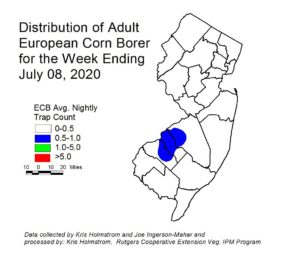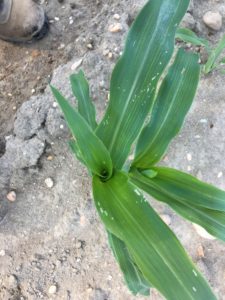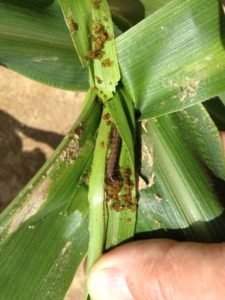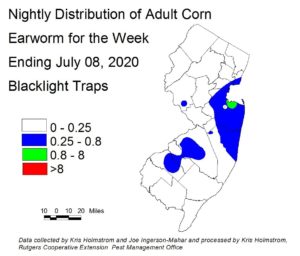Archives for July 2020
Revised New Jersey Pesticide Regulations — NOW POSTED ONLINE!
UPDATE – NJ Motor Vehicle Commission: Changes and Extensions, Effective July 9th
With all the difficulties customers faced with NJMVC service centers opening on July 7th, changes have been made in the processes when visiting facilities. Also, note some centers will have Saturday hours and the state has taken some NJMVC employees of furloughs to service the public. Check the NJMVC website for hours, what services are offered at certain centers, and updated information. Below are some changes and further extensions:
1. Each morning, when opening, the NJMVC facilities will establish the total number of customers that each agency can serve that day, based on that agency’s size, staffing, and previous day’s performance. Tickets will be given out up to that number (and based on priority reason for coming to MVC – SEE NUMBER 3 below), then remaining customers not given a ticket will be required to leave the premises. As soon as capacity is met at a facility, MVC will publish if the site is filled to capacity on their website and social media.
2. People will not be allowed to sign up to wait on MVC property after capacity is reached until the next morning at 7:00 AM.
3. New drivers will be given preference at Licensing Centers. When staff go out to distribute tickets, the first tickets will be given to those who have completed requirements for a new permit or license. Already-licensed drivers (who will be able to drive under the extension) will be served after all new drivers have been served.
The following documents, if expiring between March 1 and May 31, have been extended to September 30, 2020. If expiring between June 1 and August 31, they have been extended to December 31, 2020.
• All standard driver licenses (including permits)
• Standard non-driver IDs
• Vehicle registrations
• Inspections
• Temporary tags
CDL Extensions
Expiration dates on commercial driver licenses (CDLs), commercial learner’s permits, and HAZMAT endorsements have been extended a second time, to September 30, 2020. This means expirations that were previously extended to June 30 have been extended for another three months. The extensions do not apply to documents that expired before March 1.
The extension also includes the Medical Certifications of CDL holders, as long as the medical certificates were for 90 days or more and expired after March 1.
The extensions mirror those issued recently by the Federal Motor Carrier Safety Administration, which oversees CDLs, and the federal Transportation Security Administration, which oversees Hazardous Materials endorsements (HAZMAT).
Many transactions can now be conducted online. Check out the NJMVC online services to see if you need to conduct business with NJMVC online.
All customers are required to wear face coverings when visiting an agency.
Vegetable IPM Update 7/08/20
Sweet Corn
 European corn borer (ECB) moth catches have fallen to very low levels over the past week. Remaining activity is highest in Gloucester and Camden counties (see ECB map at left). Threshold (12%+) level larval infestations are declining now, as the last corn plantings to be exposed to ECB in the whorl now are entering the silk stage. Larval infestations should decline sharply until the second flight appears.
European corn borer (ECB) moth catches have fallen to very low levels over the past week. Remaining activity is highest in Gloucester and Camden counties (see ECB map at left). Threshold (12%+) level larval infestations are declining now, as the last corn plantings to be exposed to ECB in the whorl now are entering the silk stage. Larval infestations should decline sharply until the second flight appears.
The highest nightly trap catches of ECB for the week ending 7/08/20 are as follows:
| Cinnaminson 1 | Georgetown 1 |
| Downer 1 | Long Valley 1 |
| Eldora 1 | New Egypt 1 |
| Elm 1 | Springdale 1 |
 Fall armyworm (FAW) larvae have appeared in low numbers in fields in Cape May County, as well as in Hunterdon and
Fall armyworm (FAW) larvae have appeared in low numbers in fields in Cape May County, as well as in Hunterdon and Morris counties. This pest seems to have arrived last week some time, and has since subsided somewhat. This is the time of the summer when FAW can show up, resulting in significant injury to whorl and even seedling stage corn. Injury from newly hatched larvae shows up as “window panes” or areas where leaf tissue has been eaten down the the lower epidermis (see photo at left). This injury leads down into the whorl. As larvae gain size, they begin to consume leaf tissue in its’ entirety, creating ragged holes and lots of droppings (see photo at right). FAW can be tough to manage because it is resistant to synthetic pyrethroid insecticides (IRAC 3A) and because larvae are often covered by their own droppings, making contact with the insecticide more difficult. Treat when 12% or more plants exhibit FAW injury alone, or in combination with ECB injury.
Morris counties. This pest seems to have arrived last week some time, and has since subsided somewhat. This is the time of the summer when FAW can show up, resulting in significant injury to whorl and even seedling stage corn. Injury from newly hatched larvae shows up as “window panes” or areas where leaf tissue has been eaten down the the lower epidermis (see photo at left). This injury leads down into the whorl. As larvae gain size, they begin to consume leaf tissue in its’ entirety, creating ragged holes and lots of droppings (see photo at right). FAW can be tough to manage because it is resistant to synthetic pyrethroid insecticides (IRAC 3A) and because larvae are often covered by their own droppings, making contact with the insecticide more difficult. Treat when 12% or more plants exhibit FAW injury alone, or in combination with ECB injury.
 Corn earworm (CEW) moth captures have declined in blacklight traps this past week. Despite lower moth levels, silking corn continues to require protection from this pest. Blacklight catches remain highest overall along the coast (see map at left).
Corn earworm (CEW) moth captures have declined in blacklight traps this past week. Despite lower moth levels, silking corn continues to require protection from this pest. Blacklight catches remain highest overall along the coast (see map at left).
The highest nightly trap catches of CEW in black light traps for the week ending 7/08/20 are as follows:
| Matawan 2 | Medford 1 |
| Cinnaminson 1 | Milltown 1 |
| Downer 1 | New Egypt 1 |
| Farmingdale 1 | Sergeantsville 1 |
Gov. Murphy to Sign Order Requiring Outdoor Face Coverings
As reported at njbiz.com Wednesday morning, NJ Governor Phil Murphy has indicated he will be signing “an executive order mandating that masks or other face coverings be worn outdoors, as the COVID-19 virus surges across the country and the transmission rate creeps up in New Jersey.”
The state currently requires the use of face coverings indoors and at many outdoor businesses, and strongly encourages their use when in crowded public spaces, such as at the beach. The new order will require that masks will have to be worn outdoors when social distancing is not possible.
There are many outdoor operations around the farm. Be sure to plan accordingly with supplies of masks/face coverings for all agricultural workers and harvesters, in addition to planning all field work with adequate space for individuals to keep socially distanced.
For more information on keeping you, your workers and your family safe, be sure to read and implement the recommendations in NJ’s “INTERIM CORONAVIRUS DISEASE 2019 (COVID-19) GUIDANCE FOR MIGRANT AND SEASONAL FARMWORKERS, THEIR EMPLOYERS, AND HOUSING PROVIDERS.”
Vegetable Disease Update – 7/8/20
- Cucurbit downy mildew has been reported on cucumber in southern New Jersey. This is the first report in the state this growing season. For a review of CDM control please click here. To track the progress of CDM on your phone or PC please visit the CDM forecasting website.
- Cucurbit powdery mildew season is here. For a review of CPM control strategies please click here.
- No reports of Late blight in region. To track the progress of Late blight in the US please click here.
- Aerial stem rot has been reported on potato in southern New Jersey. The pathogen is an opportunistic bacterium in the field which infects vines that have been damaged by wind and heavy rains.
- There have been a few reports of Southern blight (Sclerotinia rolfsii) on tomato and pepper. Southern blight is much more common in vegetable areas south of the state where summer temperatures remain hotter (above 90°F) for longer periods of time. Like white mold, caused by Sclerotinia sclerotiorum, it can survive in the soil for many years. Symptoms of Southern blight include infection at the base of the stem at the soil-line. The resulting infection will girdle the plant causing wilt and death. The fungus will produce white, cottony mycelium and very small, spherical sclerotia which are often have a white to tannish, brown color as they mature. For more information on Southern blight from NCSU please click here.
- Collar rot caused by Alternaria has been reported on processing tomato in New Jersey. It is the same pathogen that causes Early blight in tomato. Tomato growers who have not switched to more specific fungicides for Early blight and anthracnose fruit rot control should consider doing so. For more information from NCSU please click here.
- Bacterial wilt has been reported in tomato in New Jersey.
- Rhizoctonia root and crown rot has been reported on sugar beet in southern New Jersey. For more information from the University of Idaho please click here.
- Bacterial leaf spot has been reported in pepper. For more information on BLS and copper resistance please click here.
- Pepper anthracnose is a serious problem in all bell and non-bell peppers, especially in fields with a history of the disease. For more information on controlling pepper anthracnose please click here.
- Phytophthora blight has been reported in pepper and cucurbit crops. For more information please click here.
- Basil downy mildew (BDM) has been reported in southern New Jersey on BDM susceptible sweet basil. All growers are encouraged to initiate preventative fungicide programs on DMR and non-DMR basil. For control options and to follow the progress of BDM in the US on your phone or PC please click here.
- Downy mildew has been reported in kale seedlings in a hydroponic greenhouse in PA. As a note, kale and related crops should be scouted on a regular basis. For more information on downy mildew in brassica crops from UMASS-Amherst please click here.
- Bacterial canker has been reported in fresh-market tomato. For a review of bacterial canker in tomato please see report by Dr. Sally Miller at The Ohio State University by clicking here.
- Diplodia leaf streak, a fungal disease, was identified in sweet corn this past week. Symptoms include the development of numerous pycnidia which produce conidia within the lesions on infected corn leaves. For nice reviews, please see report by Dr. Kiersten Wise and colleagues from the University of Kentucky and report by Dr. Steve Johnson at the University of Maine.
- White mold, caused by Stromatina cepivorum, has been reported in garlic. For more information, please see report by Crystal Stewart and Frank Hay from Cornell University.
- Angular leaf spot has been reported in summer squash. Look for angular lesions delimited by leaf veins and ‘shotholes’ in infected leaves that develop after periods of hot, dry weather.
- Bacterial leaf spot has been reported in sweet basil. BLS of sweet basil is a relatively new disease of basil in the US. The bacterium has a large host range and can survive and overwinter in the soil on infested plant debris. Disease development is favored by hot, humid, rainy weather. Periods of hot, dry weather will help mitigate disease development.
- With the on and off again heavy rains we have been getting, along with warmer weather, all growers should consider applying at-transplanting fungicides for root rot control. Please click here to see these articles.
- For a quick review on managing fungicide resistance development using tank mixes and fungicide rotations, and information on FRAC group 4, FRAC group 7, and FRAC group 3 and FRAC group 11 fungicides please click on hyperlinks.
- For more information on the control of the diseases mentioned above please see The 2020/2021 Commercial Vegetable Production Recommendations Guide which is available for free online! With many county offices running reduced hours or being closed this is the easiest way to obtain the newest recommendations.
